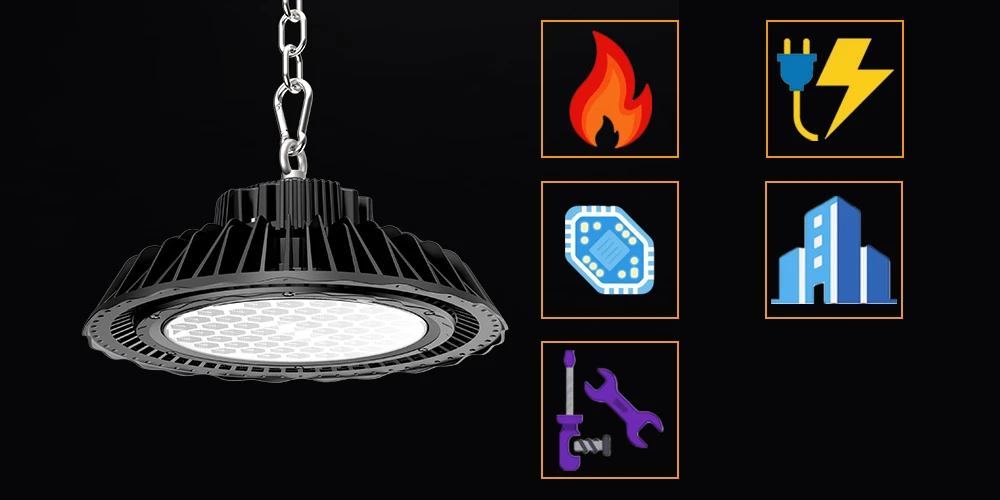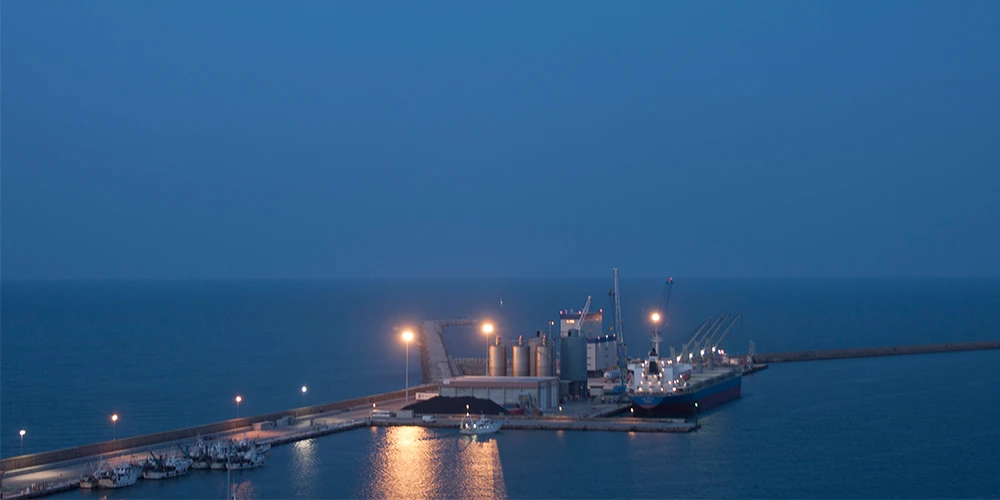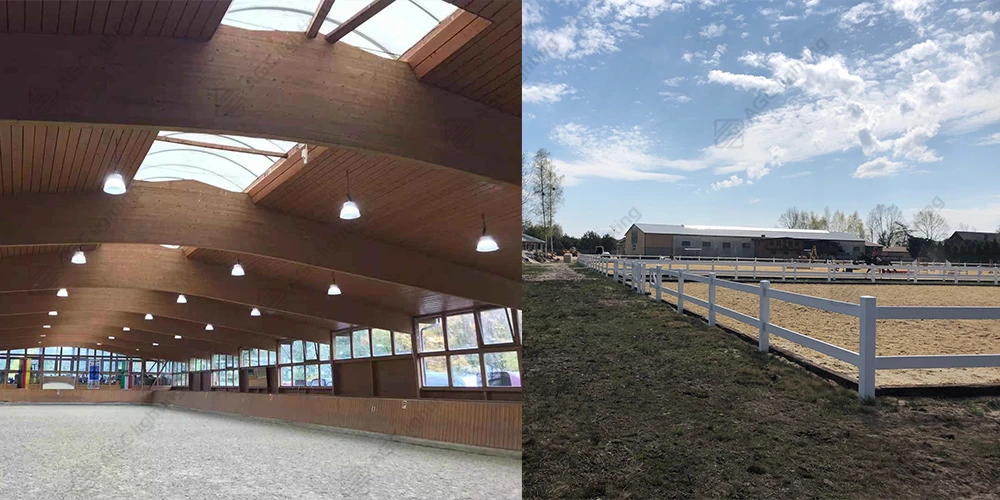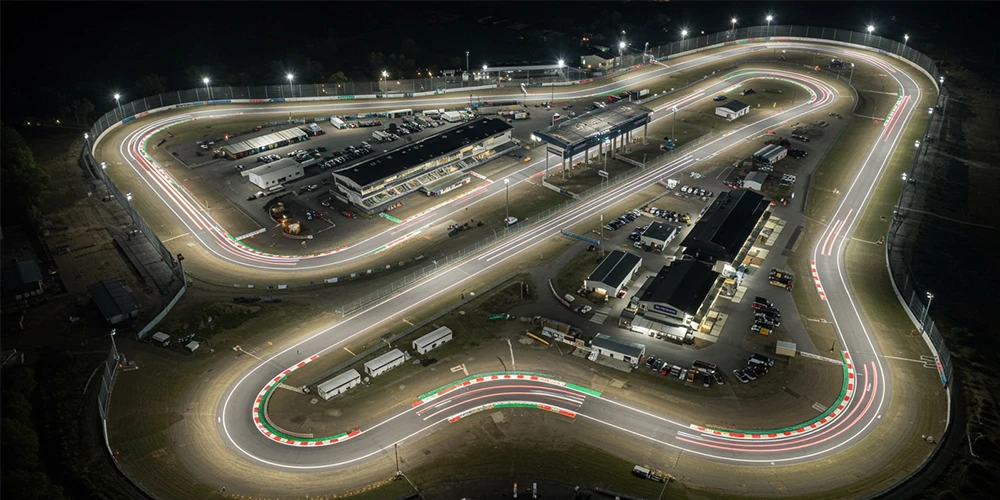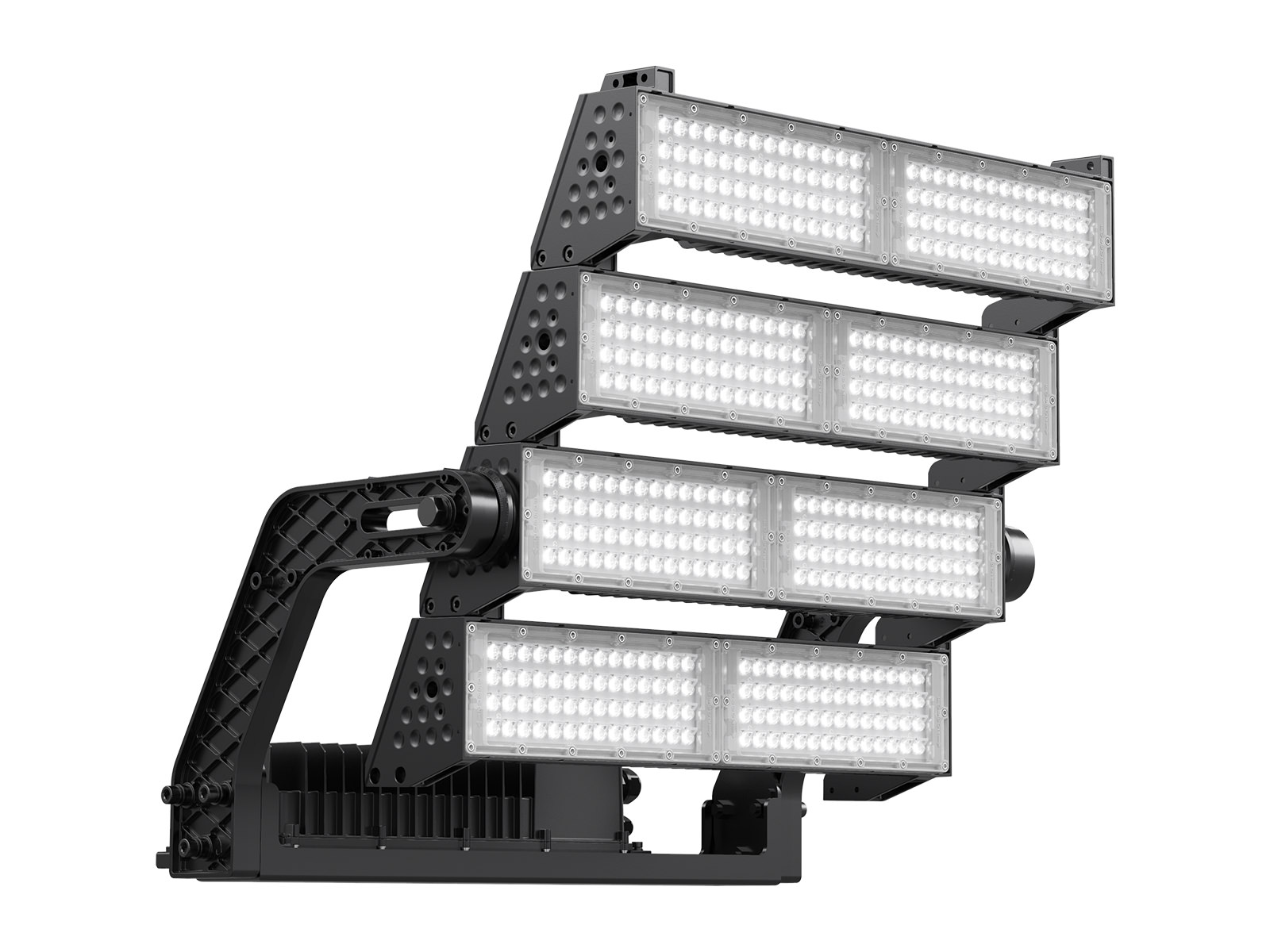Outdoor lighting normally utilizes LED flood lights, and these fixtures are mounted on high poles. There are many posts about proper outdoor lighting fixture selection, but few posts explain the importance of poles to support these outdoor flood lights.
Outdoor environments, such as heavy wind, are risky for safety and security. Proper support of floodlights is relevant to the structural aspect, and it requires careful analysis. It is helpful to understand some of the terminologies, such as Effective Projected Areas. Today, let’s talk about this technical topic - EPA (Effective Projected Area).
What is EPA for floodlights
EPA (Effective Projected Area) refers to the total surface area of items such as the lighting fixtures that the pole can support at a given wind velocity.
For flood lights, the EPA is a way to measure the strength of a light pole. As is known, the wind can touch almost anything. So, engineers or LED lighting manufacturers use the EPA to determine the force that the wind is going to apply to the structure. This value is used in combination with a luminaire’s net weight to determine the mounting requirements to help choose the right pole, mounting heights, mounting ways, etc.
EPA is the measurement of a three-dimensional light fixture on a two-dimensional area (see the drawing below).
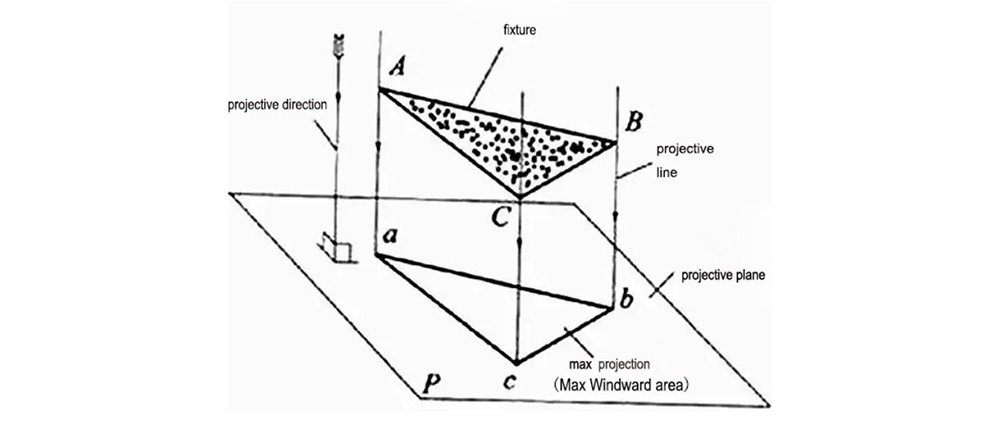
How to calculate Effective Projected Area (EPA)?
Equation: To determine the EPA of a luminaire, the frontal projected area is multiplied by the drag coefficient of the luminaire.
EPA = (Frontal Projected Area) x (Drag Coefficient)
Take our SP01 LED flood light as an example:
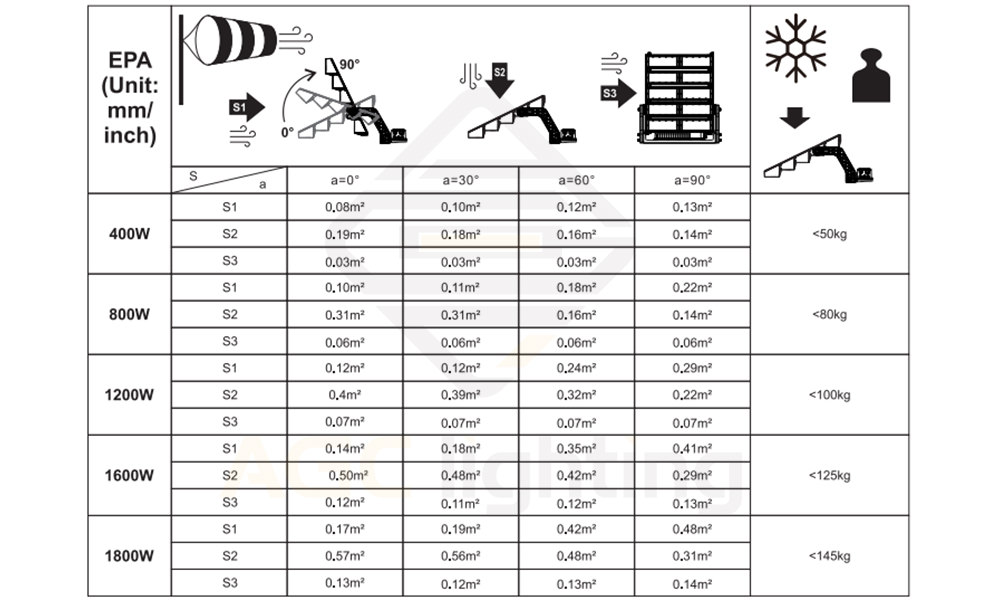
For more details, please contact me.




